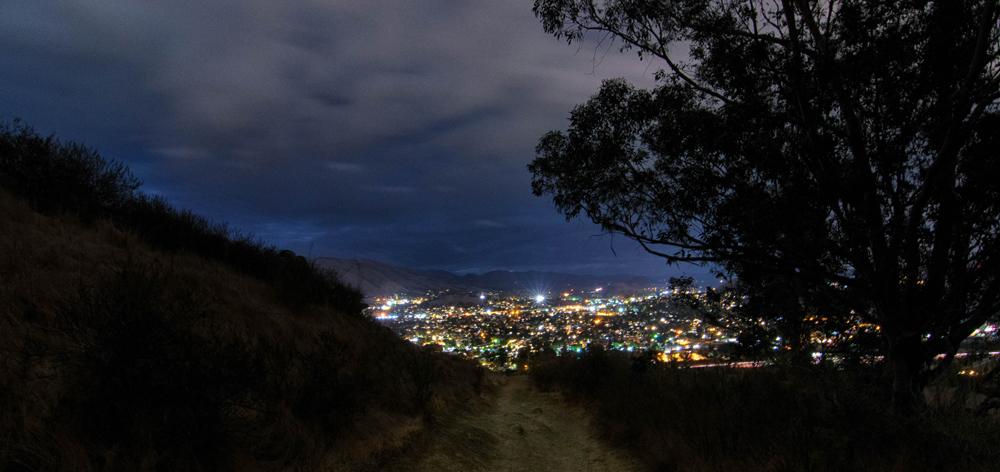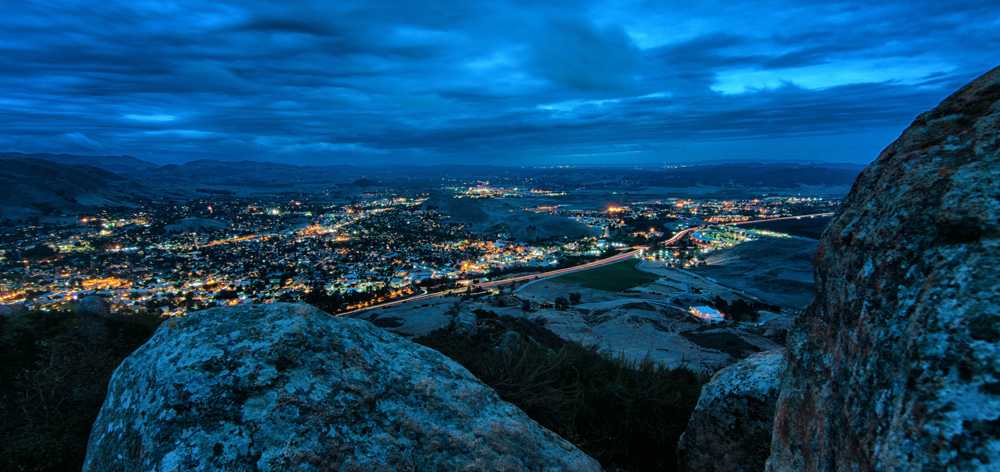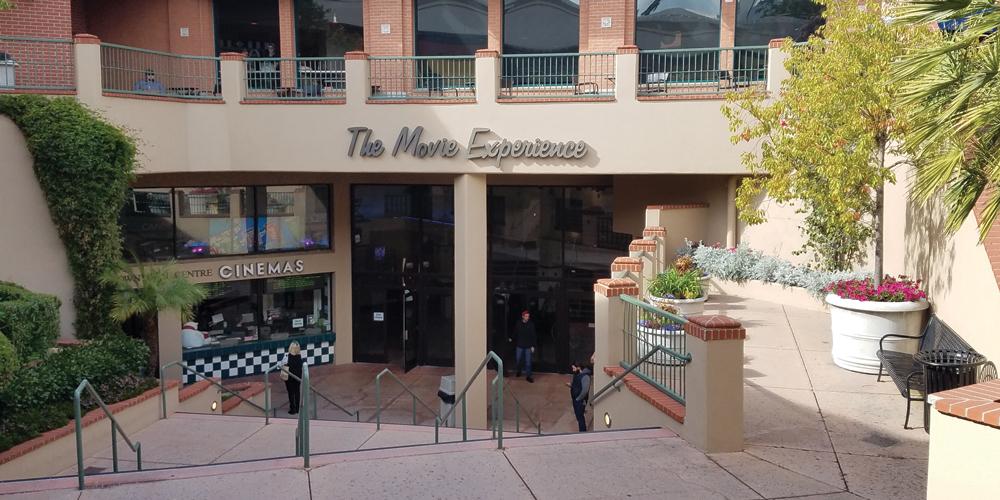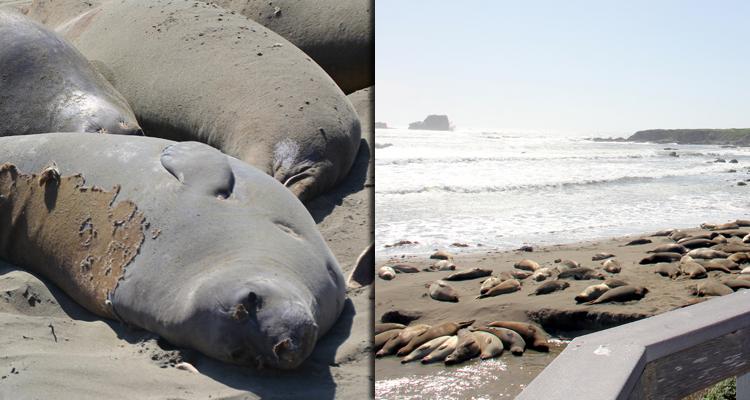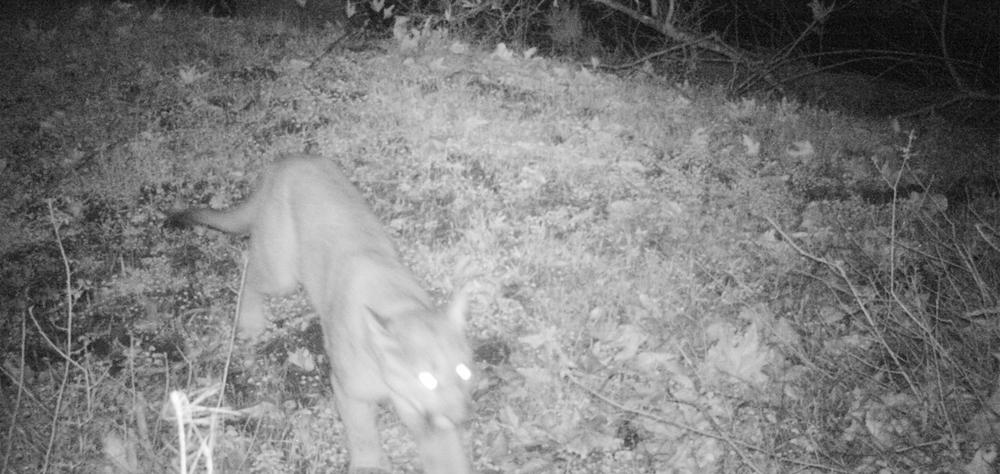Looking down onto the city of  San Luis Obispo from Cerro San Luis Obispo.
Photo by Dylan MuskratÂ
By Kaylee Brooks
Special Contributor
Journalism 201A
The San Luis Obispo City Council is considering offering more time for recreational activities along Madonna Mountain, such as night hiking and biking, during the upcoming winter season when daylight savings time is not in effect.
If passed, the extension will allow outdoor use to start one hour before sunrise until 8:30 p.m., being that 8:30 is an hour after the longest day during the summer solstice.
Currently in the city of San Luis Obispo it is illegal to hike after dark, and those who are found violating this law will be given a fine of $561.
Natural Resources Manager Bob Hill spoke at a city council meeting on Oct. 17 discussing the proposal of the two-year pilot program in extending the winter hours.
“The primary criteria that we really wanted to look at is: first of all council direction was to take Bishop Peak off the table, secondary we wanted to look at areas where evolved or open space properties and all of them contain wildlife habitat, what area might have the least wildlife values, and then lastly another consideration was to look compatibility with existing neighborhoods and any potential implication for emergency safety responses as well,†Hill said.
Areas that fit the criteria were Laguna Lake and Cerro San Luis Obispo. Laguna Lake only has about a mile of overall trails, making Cerro San Luis Obispo — ranging at 4.9 miles of accessible trails — the only site suitable for those who are seeking the extended hours.
A 2017 study by San Luis Obispo’s wildlife biologist was conducted to explore the types of wildlife that call San Luis Obispo home.
The study found that “no threatened or endangered wildlife species have been identified,†according to Hill.
Hill mentioned the discovery of the San Diego Desert Woodrat that was one special species of concern.
The San Luis Obispo’s wildlife biologist also found special animals like the Western Skink, Yellow Rumped Warbler, Rufous-Crowed Sparrow, Monarch Butterfly, raptors, Hoary Bat; a mountain lion was also spotted.
The city’s wildlife biologist also found more standard wildlife such as deer, fox, bobcats, raccoons, coyote, skunk, great horned owl, and barn owls.
With the pilot program, no modification will be made through the proposal. Visitors would still be using the existing trails within the reserve.
The possibility for displacing species is always a concern, specifically the San Diego Woodrat was mentioned.
It is unlikely that the special status San Diego Woodrat would be impacted, but for other species’, it is “likely that some level of indirect impact will occur, however the extent and severity of these
There may be a disruption of normal foraging for nocturnal and crepuscular species (those who eat at sundown), increased energy uses as a result of disturbance, disruption of breeding/nesting behaviors, increase the risk for perdition for species flushed by human activity, and abandonment of habitat near recreational areas.
“It’s likely that some level of indirect impact will occur, however the extent and severity of those potential impacts remain unknown,†Hill said.
A 2014 statistic ran by the city’s parks and recreational rangers, with the help of Cal Poly, found that 400 to 600 people on average use Cerro San Luis Obispo and over 1,000 on longer days during the spring and summer time.
They also ran a study of what times were most poplar and found that during the hours of 7 to 9 p.m. through the months November and December had the most human activity due to the famous Christmas Tree display.
Overall, the calculation showed that Cerro San Luis Obispo occupies about 500 people per day.
During the pilot program, parks and recreational service personnel will provide oversight and will implement additional patrol of the reserve. Staff will also continue to keep track of frequency human use and hours of use at the reserve. They also plan to deploy four wildlife game cameras to monitor and track nocturnal wildlife composition, activity, and behavior.
Staff of Parks and Recreation of San Luis Obispo will prepare a summary report of the pilot program for the council’s consideration, and at that time seek further guidance based on the levels of the use during the pilot program and evaluation of that data collected.
It is a proposal the city council is willing to consider, but they are allowed to opt out of this pilot program if need be.
At this time there is no specified date when the council will make their final decision.
As of now The San Luis Obispo City Council appeared to be split 3-2 in favor of the pilot program, with Council-members Andy Pease and Carlyn Christianson against it.
The extension is proposed to take place Nov. 5, 2017 to March 11, 2018, and Nov. 4 2018 to March 10 2019. It has been made clear that no decision has been made yet by the City Council. The issue remains as an ongoing council consideration.
